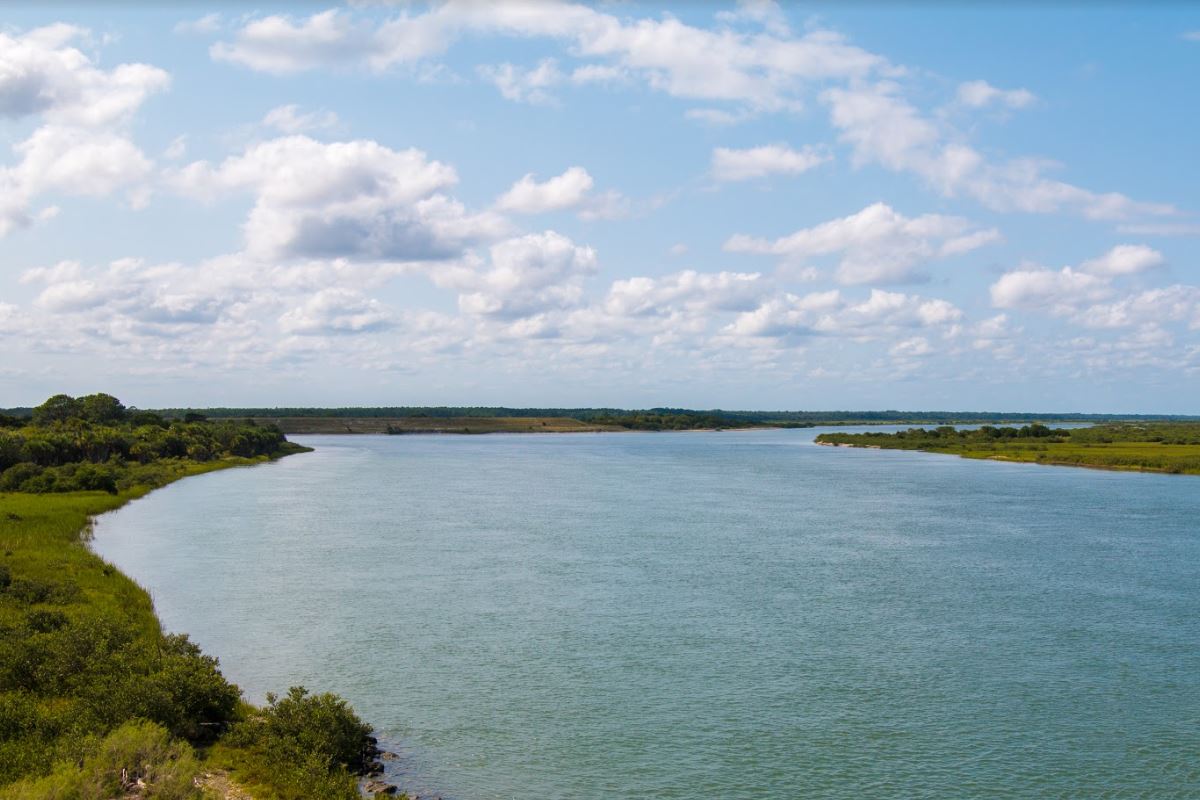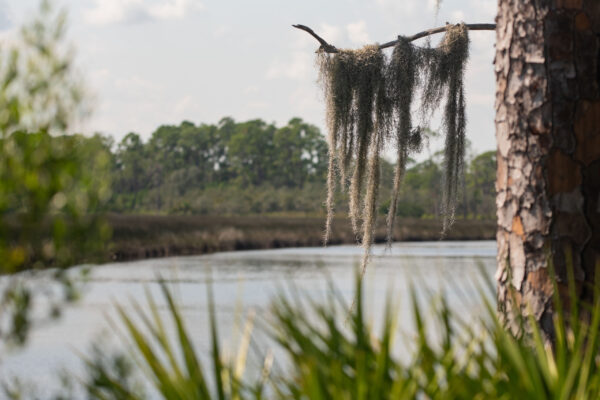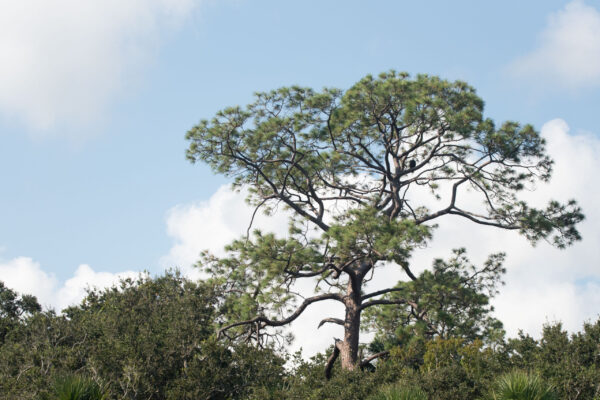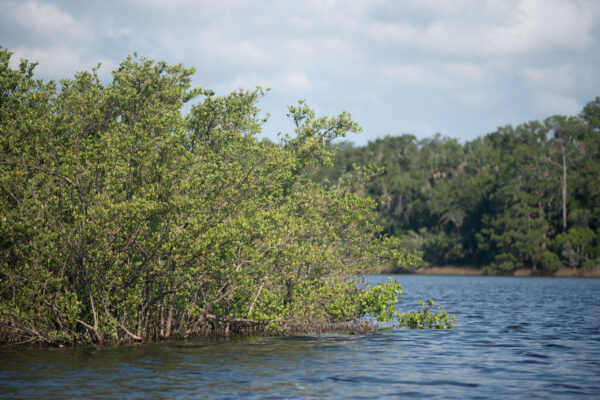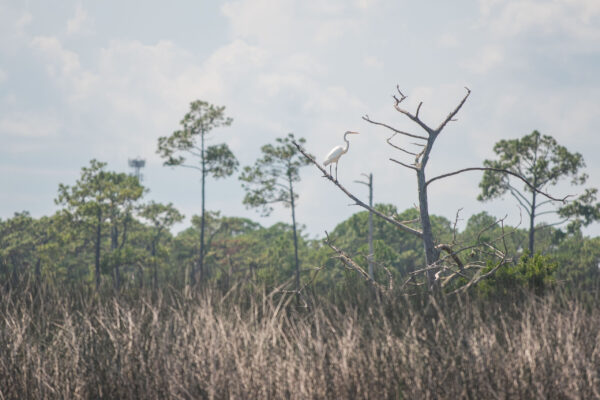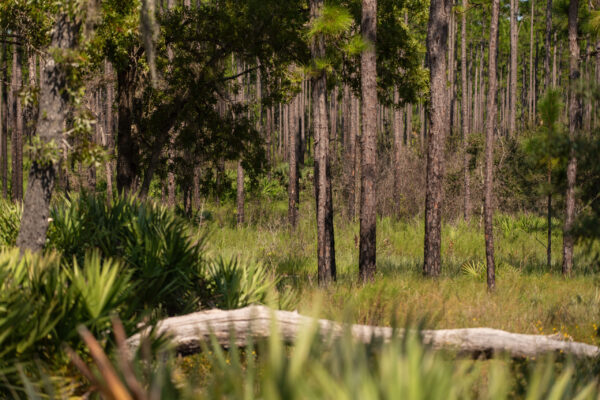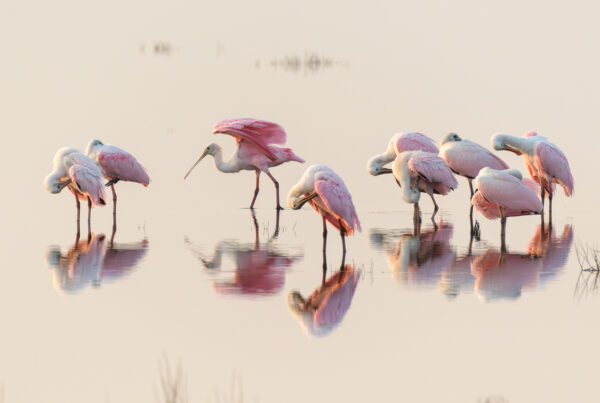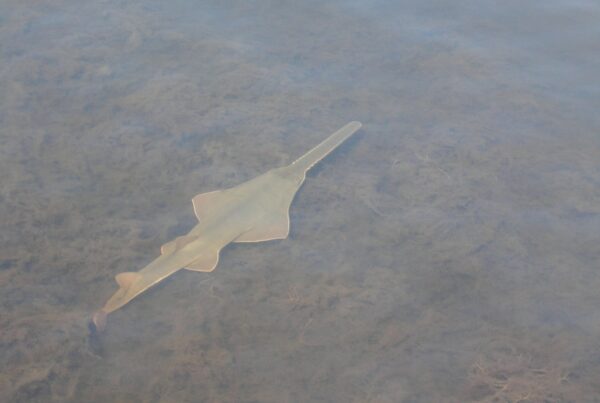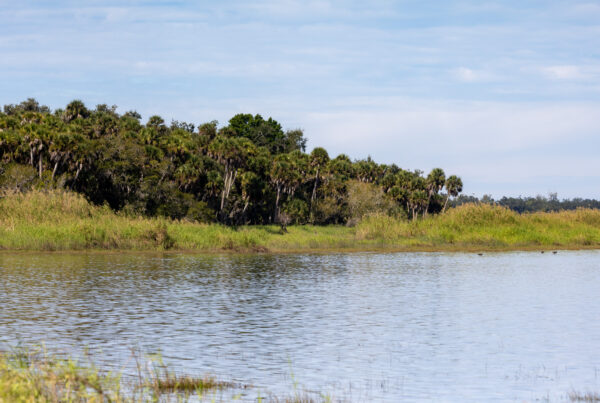by Morgan McClure, Marketing and Communications Director
As part of the Florida Wildlife Federation’s effort to connect more deeply with the wild places around us, I recently took a day to explore Faver-Dykes State Park and the surrounding waterways, just south of St. Augustine.
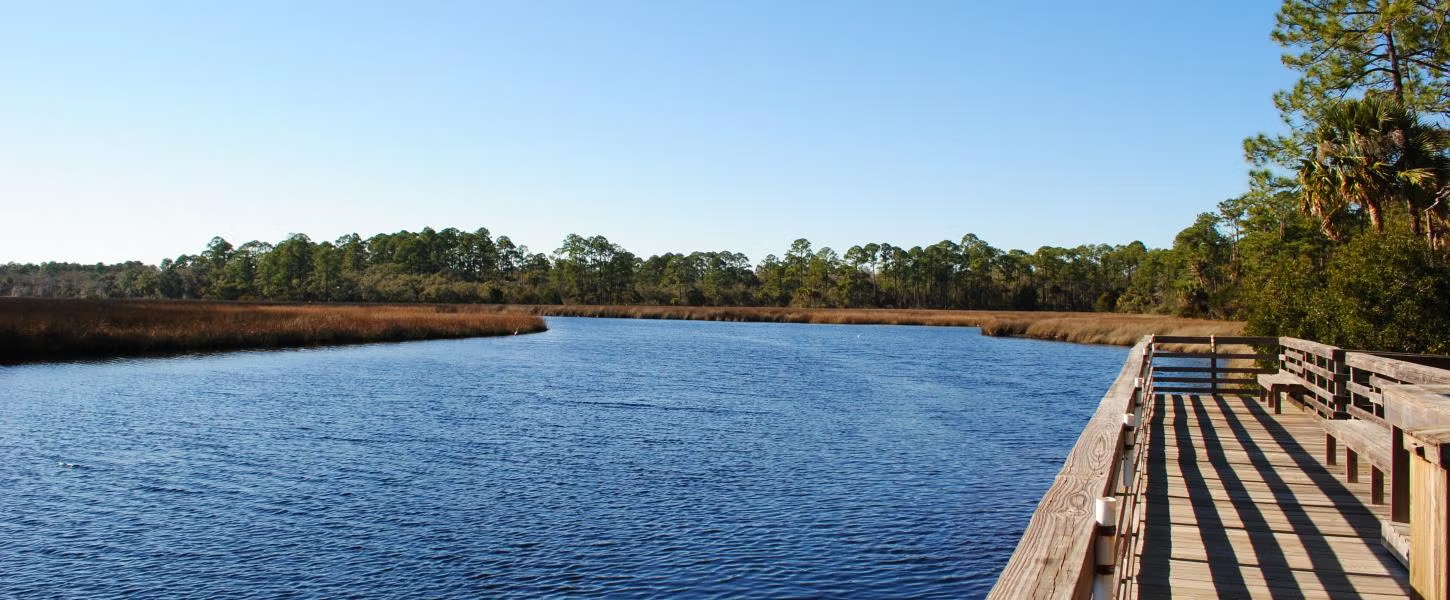
Faver-Dykes State Park. Photo by Florida State Parks
Faver-Dykes is one of those quiet parks that doesn’t draw big crowds, but that’s part of its charm. Visitors can hike, camp, picnic, or fish, but on this day, my husband and I chose to launch our small boat. The boat is simple but accessible, and it opens the door to one of the most peaceful waterways in northeast Florida: Pellicer Creek.
Pellicer Creek is an officially designated Florida Canoe Trail, recognized for its ecological value and recreational opportunities. Its tannin-stained water winds slowly through pine flatwoods and cypress, forming an important link between freshwater and the estuarine ecosystems of the Matanzas River. For small boats, kayaks, or canoes, it offers a chance to experience a natural corridor largely untouched by development.
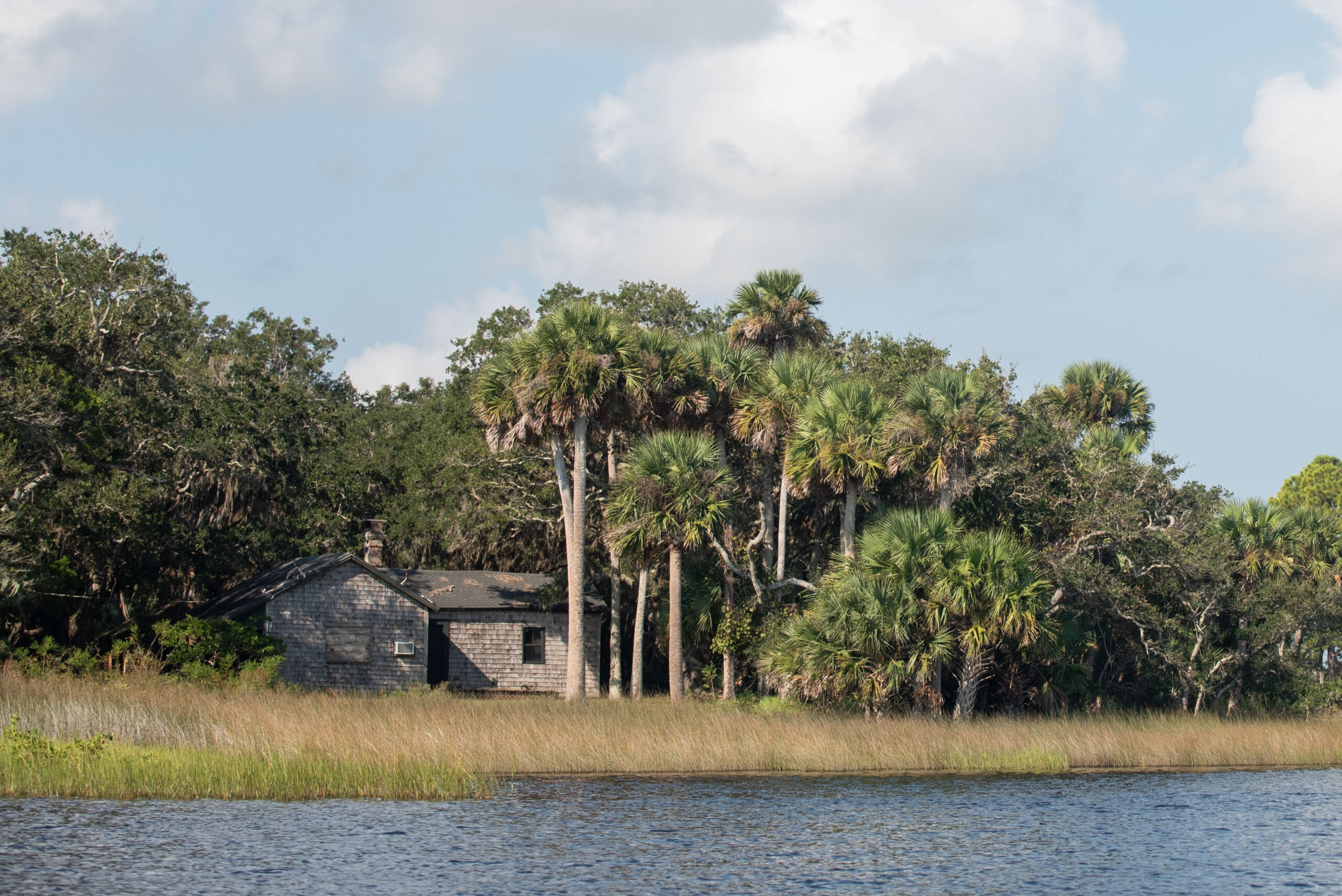
The waterway felt far removed from the bustle of U.S. 1 just a few miles back. Tall pines framed the shoreline, and wildlife was never far. A belted kingfisher traced the creek ahead of us, rattling out its call. More than 100 bird species have been spotted in this area during fall and spring migrations. Beneath the surface, we imagined the fish, crabs, and other creatures supported by this rich estuarine system.
Downstream, the landscape began to change. The pine forest gave way to salt marsh and tidal flats as we approached Princess Place Preserve, a 1,500-acre property known for its historic lodge and for being one of Flagler County’s earliest protected lands. Today it serves as an important buffer for water quality and wildlife habitat along the Matanzas.
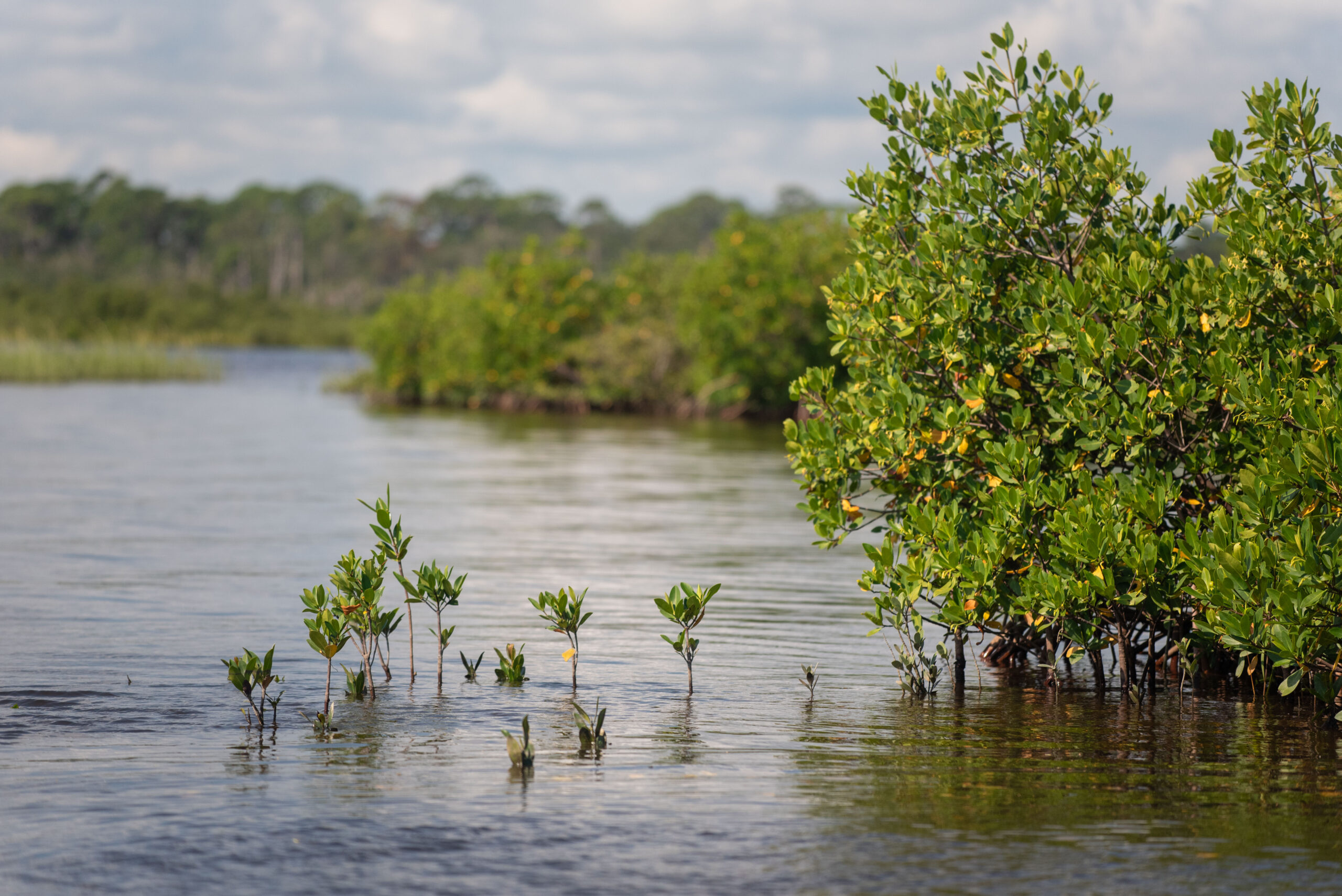
As the freshwater gave way to salt water, we spotted the beginnings of mangroves along the shoreline. This made me pause: where exactly do mangroves start in Florida? I’d never really seen them during my time in Jacksonville. Turns out, mangroves generally don’t thrive north of St. Augustine because they can’t tolerate prolonged freezes. Here, though, we were right at the northern edge of their range. Seeing them peek into the landscape felt like a marker: you’re leaving pine uplands behind and entering a more tropical Florida.
When we reached the Matanzas River, the horizon opened wide. The waters here are tidal, flowing in and out with the Atlantic, connecting all these habitats together. Out on the river, we were thrilled to spot a pair of bald eagles, symbols of resilience thanks to conservation efforts. My husband cast a line as we floated, while I marveled at the views through my camera lens.
The river connects a chain of protected lands, including Faver-Dykes and Princess Place all the way to Fort Matanzas National Monument, where history and ecology meet. Traveling this route is a reminder that our public lands are more than isolated parks—they are part of a living, connected system that sustains wildlife and enriches our lives.
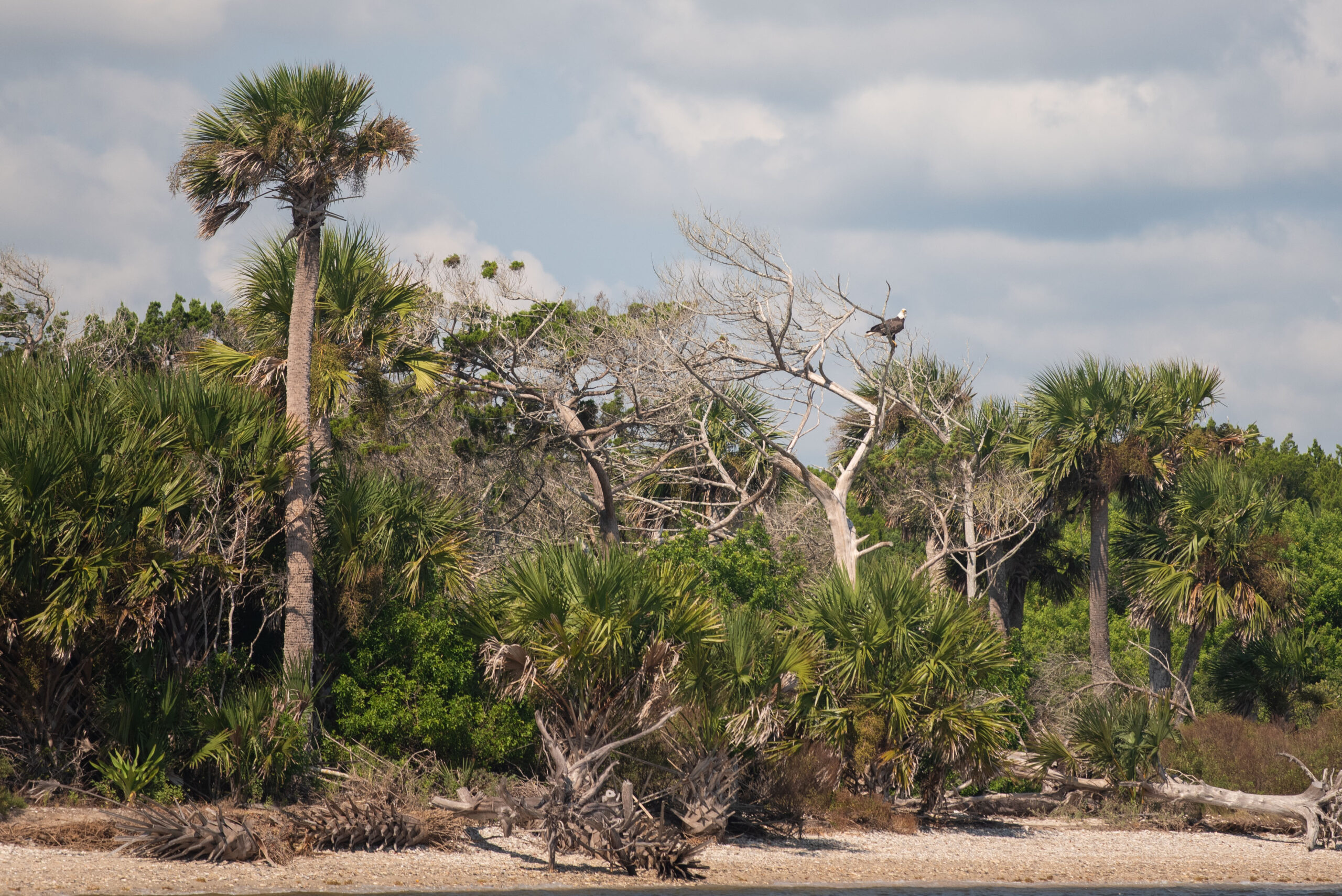
That’s what makes days like this possible. It’s not just about spotting eagles or watching the landscape shift from pine forests to mangroves. It’s about the fact that these places are still here, protected and accessible, so we can step into them and feel how wild Florida really is.
Faver-Dykes State Park
- Location: 1000 Faver-Dykes Road, St. Augustine, FL 32086 (about 15 minutes south of downtown St. Augustine, near I-95 Exit 298).
- Hours: Open daily, 8 a.m. to sunset.
- Fees: $5 per vehicle
- Activities: Canoeing, kayaking, boating (small ramp), fishing, hiking, picnicking. Camping is also available, but temporarily closed.
- More info: Florida State Parks – Faver-Dykes
Tips for Exploring the Area
- Boating: Pellicer Creek is shallow near its mouth, so pay close attention to tides and navigation. Small boats, canoes, and kayaks are best suited for these waters.
- Paddling: The designated canoe trail offers excellent opportunities for quiet exploration. Launch sites are available at both Faver-Dykes and Princess Place.
- Wildlife Viewing: Bring binoculars—kingfishers, herons, ospreys, and occasionally eagles can be seen along the creek and river.
- What to Bring: Sunscreen, water, snacks, insect repellent, and a dry bag if you’re paddling.


